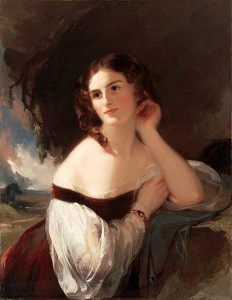A Community for Curious Minds who love History, its Odd Stories, and Good Reads
A Community for Curious Minds who love History, its Odd Stories, and Good Reads
By Holly Tucker
 My historical novel, The Lost Summer of Louisa May Alcott, imagines a summer in Louisa’s life when she was just 22 and on the precipice of a remarkable life. In trying to understand Louisa, I investigated the books she loved and the people she admired. That’s how I learned about Fanny Kemble.
My historical novel, The Lost Summer of Louisa May Alcott, imagines a summer in Louisa’s life when she was just 22 and on the precipice of a remarkable life. In trying to understand Louisa, I investigated the books she loved and the people she admired. That’s how I learned about Fanny Kemble.